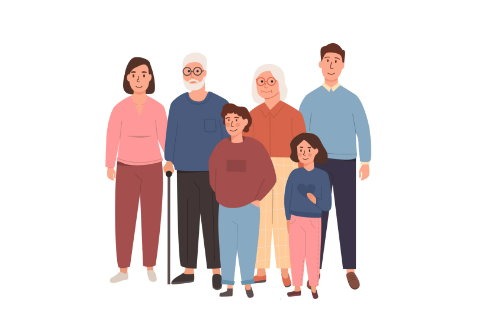
Travis and Jean are in their late 50s and looking forward to retirement in a couple of years. They own their own home and have $600,000 in superannuation. They have two adult children – Tom aged 27 who is married with two young children earning $60,000 per annum and Janine 25 who has just finished a university course and started her first job in accounting earning $50,000.
What if Travis and Jean don’t take out insurance?
Travis and Jean don’t believe that they need insurance for themselves anymore as they have no debts, accumulated savings and their children are grown up.
However their daughter Janine is diagnosed with Chronic Fatigue Syndrome and is unable to work for a period of 2 years and she comes to live with Travis and Jean.
Their son Tom, who is the main breadwinner in his family and works as a plumber, suffers a serious back injury which means he is unable to work in this occupation again.
As a result Jean becomes a full time carer of Tom and his two children while his wife returns to work as teacher. Travis and Jean loan money to Tom and his wife to help them meet their expenses and are considering mortgaging their home so that they can provide them with a deposit to buy a house as their home ownership dreams are fading away. Travis estimates he will need to work well past 65 in order to support his adult children and try to rebuild his retirement savings.

What Insurance could Travis and Jean have taken out?
As it turns out, one of the main threats to Travis and Jean’s retirement was a serious injury or illness affecting their children which required their support in terms of both time and finances. By taking out insurance for their children they could have protected against this.
Because their children are relatively young the cost of this insurance is inexpensive and level premium policies are not much more expensive than age based stepped policies. By taking out these covers while their children are young and healthy they can put in place valuable cover which their children can assume responsibility for when their finances allow.

1. Income Protection
Travis and Jean could have provided the funds for Tom and Janine to purchase income protection cover (the policies would be owned by Tom and Janine so that they could claim a tax deduction for the premium). Each of them could cover up to 70% of their income with a benefit period to age 65 which would ensure that they were covered for both short term and potentially long term sickness or injury. Including the claims escalation option in these policies would be particularly important to ensure that when they were on claim the payments they received were indexed to inflation.

2. Trauma Insurance
Travis and Jean could also have taken out an amount of trauma insurance cover of say $200,000 to cover against other serious illnesses such as cancer or heart attack that their children could suffer.
While these medical conditions may not turn out to be permanent, their children could incur expensive out of pocket medical treatment costs and have to take extended time off work while they are recovering. These costs could significantly impact their children’s savings and future prospects.

3. Life and TPD Insurance
To supplement the income protection payments, Travis and Jean could have taken out TPD insurance cover of say $500,000 to provide a lump sum in the event of permanent disablement. In Tom’s case this would have provided funds for his family to purchase a home.
In the unfortunate event that Tom were to die from his injury a much larger death benefit of say $1,500,000 would have been required to provide a lump sum that his widow could draw upon while bringing up their two children.
While Travis and Jean are paying for these policies they should ensure that they are named as the beneficiaries, so that they can determine how the proceeds of the policy will be spent in the event of the death of their children.
What if Travis and Jean had taken out these insurances?
Both Tom and Janine would have received income protection payments, enabling them to live independently of their parents and without needing to call on them for funding.
In Janine’s case she would have been supported until she was ready to return to work and she would have received partial payments from the policy if she was only able to manage to work 2 or 3 days a week. If Tom was unable to work again in any job he was suited to, he would continue to receive payments under his policy until age 65 and these payments would be indexed to inflation each year. In addition the TPD payout of $500,000 which Tom received would enable his family to purchase a home and remain financially independent.
Importantly for the small cost of these insurances Travis and Jean can be confident that their retirement plans will stay on track and their children will be well cared for.
Please note that the above case study is provided for illustrative purposes only. This is general advice only and does not take into account your particular circumstances, such as your objectives, financial situation and needs. If you would like advice on your personal situation please go to Get Advice.
